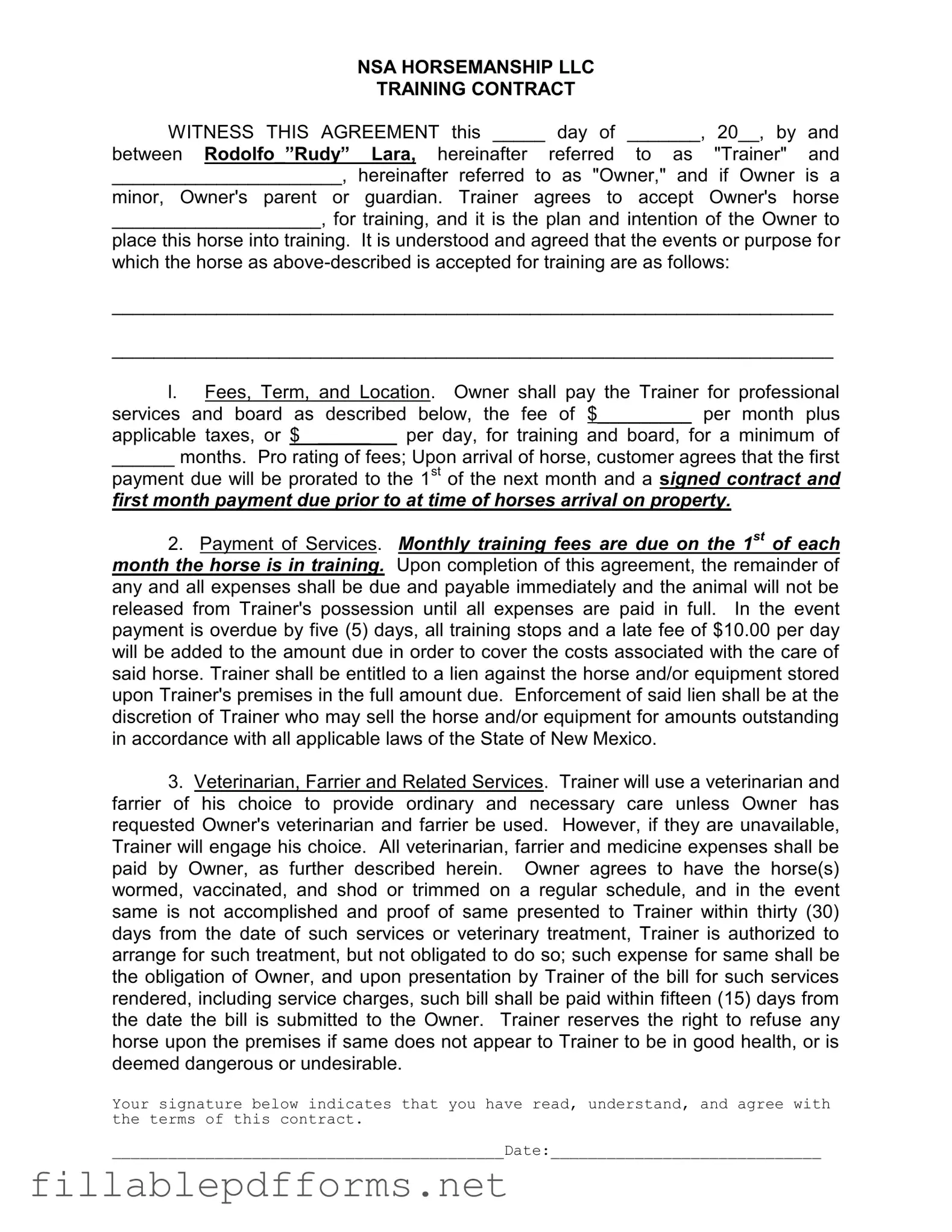When it comes to training horses, clarity and mutual understanding between the trainer and the horse owner are paramount. The Horse Training Contract serves as a vital tool in establishing this clarity. This document outlines the roles and responsibilities of both parties, ensuring that everyone is on the same page from the outset. Key elements of the contract include the agreed-upon fees for training and boarding, the duration of the training period, and the specific services to be provided. It also addresses important aspects such as the care of the horse, the use of veterinarians and farriers, and the owner's responsibilities in maintaining their horse's health. Additionally, the contract covers emergency care procedures, liability issues, and the inherent risks associated with horse training. By signing this contract, owners acknowledge the risks involved while also ensuring that they have a clear understanding of the trainer's obligations and the standard of care that will be provided. This agreement not only protects the interests of both parties but also fosters a positive training environment for the horse, ultimately aiming for a successful and rewarding experience.
